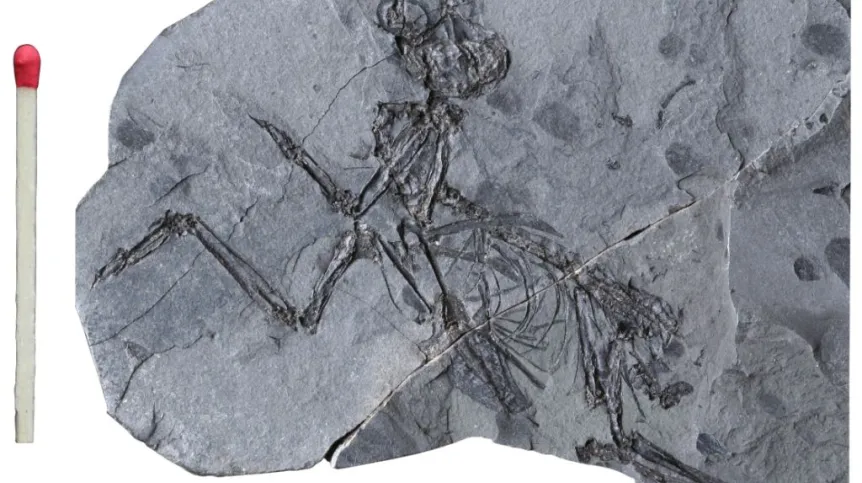
A new species of bird from before 29 million years has been discovered near Rzeszów by the local paleontology enthusiast. Description the find find, prepared by Polish scientists, was recently published in the prestigious "Journal of Ornithology".
Resoviaornis jamrozi is a newly discovered species of a passerine bird (Passeriformes) which lived in the early Oligocene.
"The name of our specimen (Resoviaornis jamrozi) comes from the name of the city, near which it was found (Rzeszow is Resovia in Latin, Greek word for bird is ornis) and the name of the finder - Albin Jamróz" - told PAP Prof. Zbigniew M. Bocheński from the Institute of Systematics and Evolution of Animals PAS, one of the authors of the publication on the find.
Other members of the team that described the newly discovered species were Dr. Teresa Tomek and Krzysztof Wertz of the Institute of Systematics and Evolution of Animals PAS, and Ewa Świdnicka from the Department of Palaeozoology of the University of Wrocław.
The fossil was discovered by paleontology enthusiast from Rzeszów - Albin Jamróz. Specimens from his collection, which consists mainly of fish and plant fossils from the Oligocene of the Carpathians, were used in the past to write a number theses at the Faculty of Biology, University of Rzeszów.
"I have found the remains of a bird on the bank of a small stream, which washed menilite shale outcrop - layers tens of millions years old. This find is the crowning discovery of my life" - said Jamróz.
According to Dr. Bocheński, Resoviaornis jamrozi lived about 29 million years ago. "It was the size of today\'s blue tit. The bird’s beak indicates that it fed on insects and fruit. It had fairly long legs and probably spent most of the time on the ground or among the branches, not in the air" - described the scientist.
Due to the fact that the discovered fossil is very different from today\'s passerine birds, it was placed in a specially created new type.
The bird described by scientists drowned in the ocean, which covered the area of today\'s south-eastern Poland tens of millions years ago. Unfortunately, imprints of it feathers were not preserved. Therefore, it is not known exactly what it looked like.
According to the researchers, Resoviaornis jamrozi is the third passerine bird species from the Oligocene described in the world and one of the oldest passerine birds in general. It is also the fifth specimen of Oligocene bird fossil found in Poland.
"Our discovery brings valuable information about the early stage of the evolution of this group of birds. Currently, passerines are the largest group of birds - of about 10 thousand species of birds known today, more than half (about 5400) are passerines" - added Dr. Bochenski.
The publication is available for free on-line at Springer website, thanks to the Ministry of Science and Higher Education, which for several years has been paying for this option for all papers written by Polish scientists.
PAP - Science and Scholarship in Poland, Szymon Zdziebłowski
ssz/ agt/ mrt/
tr. RL
Fundacja PAP zezwala na bezpłatny przedruk artykułów z Serwisu Nauka w Polsce pod warunkiem mailowego poinformowania nas raz w miesiącu o fakcie korzystania z serwisu oraz podania źródła artykułu. W portalach i serwisach internetowych prosimy o zamieszczenie podlinkowanego adresu: Źródło: naukawpolsce.pl, a w czasopismach adnotacji: Źródło: Serwis Nauka w Polsce - naukawpolsce.pl. Powyższe zezwolenie nie dotyczy: informacji z kategorii "Świat" oraz wszelkich fotografii i materiałów wideo.













